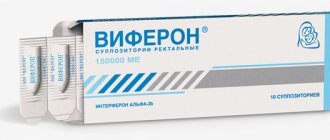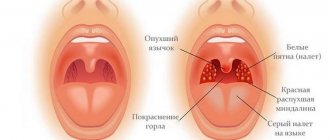The change in the rhythm of life of a young mother, sleepless nights, caring for a baby, and even recent pregnancy and childbirth weaken her immunity. Weakened immunity can lead to the appearance of colds, especially during the cold season. And then a problem arises for the mother - how to boost immunity so as not to harm her baby? Aflubin during breastfeeding is the drug of choice to increase immunity in a young mother.
To figure out whether aflubin can be taken while breastfeeding, you need to know its composition and possible side effects. Aflubin is a homeopathic medicine, that is, it consists of herbal components, as well as harmless excipients. The main effects of the drug include: immunomodulatory, anti-inflammatory, antipyretic, analgesic and detoxification. In the instructions for its use, the lactation period is not a contraindication, but in sensitive people it can cause drug allergies. Aflubin during lactation can be used not only for therapeutic purposes, but also for prophylactic purposes. When taking aflubin, a nursing mother should monitor the baby’s reaction to see if he has any allergies.
For therapeutic purposes, aflubin can be taken by a nursing mother 10 drops 3 to 8 times a day 30 minutes before meals or 60 minutes after meals. For prophylactic purposes, aflubin for hepatitis B is taken 2 times a day, 10 drops at the same time. Aflubin can be taken by nursing mothers at the first sign of a cold or flu in combination with taking other medications (vitamin C, nasal drops, throat sprays) and drinking plenty of fluids.
Thus, we have considered all the indications and contraindications for taking aflubin during breastfeeding. As you can see, aflubin is recommended for the treatment of colds during breastfeeding.
Composition and release form
| Homeopathic drops | 100 ml |
| yellow gentian (Gentiana) D1 | 1 ml |
| aconite (Aconitum) D6 | 10 ml |
| Bryonia D6 | 10 ml |
| iron phosphate (Ferrum phosphoricum) D12 | 10 ml |
| lactic acid (Acidum sarcolacticum) D12 | 10 ml |
| ethyl alcohol 43% (by weight) - 59 ml |
in dark glass dropper bottles of 20, 50 or 100 ml; 1 bottle in a cardboard pack.
| Homeopathic sublingual tablets | 1 table |
| gentian (Gentiana) D1 | 3.6 mg |
| aconite (Aconitum) D6 | 37.2 mg |
| Bryonia D6 | 37.2 mg |
| iron phosphate (Ferrum phosphoricum) D12 | 37.2 mg |
| lactic acid (Acidum sarcolacticum) D12 | 37.2 mg |
| excipients: lactose monohydrate; potato starch; magnesium stearate |
12 pcs in blister; in a cardboard pack there are 1, 2, 3, 4 blisters.
Directions for use and doses
Inside
, 30 minutes before or 1 hour after a meal, drops should be kept in the mouth for 20–30 seconds before swallowing, tablets should be kept under the tongue until completely dissolved. Drops are used in pure form or pre-diluted in 1 tablespoon of water (for adults and adolescents); for children under 1 year of age, drops and tablets are diluted in 1 teaspoon of water or breast milk.
Further treatment of clinical manifestations of acute respiratory infections or influenza:
adults and adolescents - 10 drops (1 tablet) 3 times a day; children from 1 to 12 years old - 5 drops (1/2 tablet) 3 times a day; up to 1 year - 1 drop (1/2 tablet) 3 times a day. The course of treatment is 5–10 days.
Planned prevention of exacerbation of the disease at the beginning of the cold season or before an influenza epidemic:
adults and adolescents - 10 drops (1 tablet) 2 times a day; children from 1 to 12 years old - 5 drops (1/2 tablet) 2 times a day; up to 1 year - 1 drop (1/2 tablet) 2 times a day. The course of treatment is 3 weeks.
Emergency prevention (carried out immediately after contact with someone who has the flu or acute respiratory infection or after severe hypothermia):
adults and adolescents - 10 drops (1 tablet) 2 times a day; children from 1 to 12 years old - 5 drops (1/2 tablet) 2 times a day; up to 1 year - 1 drop (1/2 tablet) 2 times a day. Course - 2 days.
Treatment of inflammatory and rheumatic diseases accompanied by joint pain syndrome:
adults and adolescents - 10 drops (1 tablet) 3-8 times a day (in the first 2 days of treatment), then - 3 times a day; children from 1 to 12 years old - 5 drops (1/2 tablet) 3–8 times a day (in the first 2 days of treatment), then 3 times a day. The course of treatment is 1 month.
For drops:
at the onset of the disease, as well as in cases requiring rapid relief of symptoms, it is possible to take 8-10 drops every 0.5–1 hour until the condition improves, but no more than 8 times, after which they switch to taking 3 times a day.
For tablets:
On days 1–2 of acute respiratory infections or influenza, adults and adolescents should take 1 tablet. 3–8 times a day (but no more), children under 12 years old - 1/2 table. 3–8 times a day (but no more).
Features of colds in women during lactation
When the manifestation of a viral cold has become obvious, it is not recommended to stop breastfeeding.
Infection of the body with a viral infection begins much earlier than the manifestation of the initial symptoms of the pathology. Therefore, before the first increase in body temperature, irritation of the nasal mucosa, or a sore throat in the mother, the baby will acquire a viral infection in breast milk, antiviral microelements, and maternal immunity to fight the disease. At the time the mother’s disease fully manifests itself, the infection will already be present in the child’s body, as well as the antiviral protection contained in mother’s milk. In fact, breast milk is a protective substance of natural origin that has a powerful antiviral effect on the baby’s body.
Read also:
Serous mastitis in nursing mothers in the postpartum period: symptoms, signs, diagnosis and treatment
Instructions for medical use
Instructions for medical use - RU No.
Last modified date: 04/21/2017
Homeopathic sublingual tablets
Composition (per 1 tablet):
Gentiana lutea (Gentiana) D1 - 3.6 mg, Aconitum napellus (Aconitum) D6 - 37.2 mg, Bryonia cretica (Bryonia) D6 - 37.2 mg, Ferrum phosphoricum (Ferrum phosphoricum (Ferrum)) D12 - 37.2 mg, Acidum sarcolacticum (Acidum sarcolacticum) D12 - 37.2 mg.
Lactose monohydrate - 74.6 mg, potato starch - 20.75 mg, magnesium stearate - 2.25
Round, flat-cylindrical tablets with a chamfer and a score, white and odorless.
A multicomponent homeopathic medicine, the effect of which is determined by the components included in its composition.
In the complex treatment of influenza, parainfluenza and acute respiratory diseases in order to alleviate the symptoms of these diseases, as well as for their prevention, both planned and emergency. For the treatment of inflammatory and rheumatic diseases accompanied by joint pain syndrome.
Hypersensitivity to the components of the drug.
Use during pregnancy and breastfeeding is possible if the expected benefit to the mother outweighs the potential risk to the fetus and child. You should consult your doctor.
Colds during the postpartum period are a common problem. This is not surprising, because the lifestyle of a young mother is changing, and due to constant worries and chronic lack of sleep, the immune system is weakened. And therefore, any viral attack threatens with unpleasant consequences in the form of a cold or flu. How to strengthen the immune system and eliminate unpleasant symptoms?
Aflubin is a popular homeopathic remedy with complex action that is used to treat influenza and acute respiratory infections. The drug is used to prevent colds during seasonal epidemics. Is it possible to take the medicine during lactation? More on this later.
What is the danger of flu while breastfeeding?
Many young mothers, having become ill with the flu, refuse to breastfeed for fear of infecting their child. This is the wrong approach, since during lactation the female body actively produces immunoglobulins, which are transferred to the baby along with breast milk. It is these antibodies that help the baby develop lasting immunity to the flu. However, it is recommended to wear a gauze mask before feeding.
If the baby’s immunity is not strong enough, there is a likely risk of influenza infection with subsequent complications. Speaking about the dangers of influenza during breastfeeding, it should also be noted the negative impact of incorrectly selected medications on the fragile child’s body.
Basic information
Aflubin is a complex drug based on medicinal herbs that stimulates local immunity and eliminates cold symptoms. The drug relieves inflammation, normalizes temperature, eliminates pain and removes toxins from the body. The medication is used to treat inflammatory diseases of the joints and rheumatism, which are accompanied by painful sensations.
The drug is available in two dosage forms, which have the following composition:
- yellow bitterweed;
- fighter;
- dioecious step;
- iron metal salt and phosphoric acid;
- α-hydroxypropionic acid.
- additional components: lactose with an attached water molecule, starch, stearic acid.
- The main components are similar.
- Additional substances: alcohol 43%.
The components of the drug activate the local immunity of the internal membranes, as a result, the patient recovers faster. There are no bacterial complications after using the drug. The medicine gradually eliminates the symptoms of colds, acute respiratory infections, reduces the amount of mucus produced, relieves pain and inflammation. As a result, swelling of the nose and rhinitis are reduced, pain in the throat disappears, and headaches are eliminated.

The medicine alleviates the patient's condition during exacerbation of chronic arthritis and degenerative-dystrophic diseases of the joints. The drug eliminates the inflammatory process and relieves pain.
- Preventive treatment of influenza, acute respiratory infections.
- To eliminate signs of influenza, ARVI as part of complex treatment.
- Inflammatory joint diseases and rheumatism, which is accompanied by painful sensations.
The medication eliminates the symptoms of a cold (headache, swelling of the nose, cough) and speeds up recovery. However, a homeopathic remedy only acts on the symptoms and not on the cause of the disease. Therefore, it is advisable to combine the drug with antiviral agents.
Dosage
The drug in the form of drops is taken 25 minutes before meals. Place drops under your tongue, hold them for 25 seconds, and swallow. If a child is taking the drops, first dilute them with water or breast milk (for infants).
Dosage of the medication at the initial stage of colds and flu:
- patients up to 12 months – 1 drop maximum 6 times in 24 hours;
- from 2 to 13 years – 5 drops no more than 8 times in 24 hours;
- from 13 years – 8 – 10 drops about 8 times a day.
Dosage of medication for the development of influenza or ARVI:
- patients up to 12 months – 1 drop three times;
- from 2 to 13 years – 5 drops three times;
- from 13 and older – 10 drops three times a day.
The duration of the therapeutic course is from 5 to 10 days.

Dose of medicine for the prevention of influenza, ARVI:
- children under 12 months – 1 drop twice;
- from 2 to 13 years – 5 drops twice in 24 hours;
- from 14 years old – 10 drops twice.
The drug is taken for no more than 20 days.
Aflubin in tablet form is taken half an hour before meals. Place the tablet under your tongue and hold it until it dissolves. For a child, the tablet can be dissolved in water or breast milk.
At the first symptoms of a cold, patients under 13 years of age take ½ tablet no more than 8 times in 24 hours. Dosage for patients over 14 years of age – 1 tablet maximum 8 times a day.
In the advanced stage of influenza or acute respiratory viral infection, patients under 13 years of age take half a tablet, children over 14 years of age and adults - 1 tablet three times a day. The therapeutic course lasts from 5 to 10 days.
To prevent influenza and ARVI, children under 13 years of age take ½ tablet, and patients over 14 years of age take 1 tablet twice. Preventive treatment continues for 20 days.

Aflubin, instructions
Before taking each drug, even those prescribed by a specialist, you must read the instructions yourself. After all, you may have contraindications that your doctor simply did not know about. In the description of the drug, the manufacturer must indicate all its characteristics, dosages, side effects and effects on pregnant and breastfeeding mothers.
Sometimes, when we prescribe treatment for ourselves and without consulting a doctor, we trust advertising and the advice of friends more. This option is fundamentally wrong, since all organisms are individual, and the same remedy has a different effect on everyone. Now it is very convenient that all instructions can be found on the Internet before purchasing the medicine. And Aflubin’s description is also easy to find.
The instructions for this drug are described in detail on all points, and honestly indicate that it is not a drug. The drug is homeopathic, its action is aimed at generally increasing immunity and resistance to viruses. It also has an antipyretic effect, removes toxins, and reduces the manifestations of inflammation. The manufacturer indicates that with the help of Aflubin during pregnancy, you can fight acute respiratory diseases, influenza and parainfluenza, inflammatory processes, and rheumatic diseases.
Currently reading: Signs of pregnancy in the first days
But unfortunately, its action is aimed more at reducing the manifestations of the disease than at its cause. That is, there will be an improvement, but this drug alone will not be able to cure the disease. It is better to use it as one of the components of complex therapy, or for the purpose of prevention.
You can buy Aflubin in the form of drops or tablets . The duration of administration and dosage are selected individually, in accordance with the task assigned to it and other parameters (age, exacerbations, contraindications, etc.). In any form, the drug is taken orally half an hour before meals or an hour after it. For faster action, you can hold the product under your tongue for several minutes.
To date, no side effects of Aflubin have been recorded during pregnancy ; only a slight increase in salivation is possible. It is indicated that pregnant and lactating women are prescribed the drug by a doctor, according to indications.

Aflubin
Contraindications and side effects
Aflubin should not be taken only if you are hypersensitive to the components of the drug. Sometimes a homeopathic remedy causes excessive salivation. Cases of drug overdose have not been registered.
During pregnancy and lactation, the medicine can be taken, but only as prescribed by a doctor.
The liquid form of the drug becomes cloudy over time, its aroma and taste are weakened, but this is a normal phenomenon for a product based on herbal ingredients.
- people suffering from alcoholism;
- children under 13 years of age;
- pregnant or lactating women;
- epileptics;
- patients with functional liver disorders.
Often, on the first day after using the drug, the patient’s condition worsens, but this is a normal reaction of the body to the activation of the immune system. Your health improves on its own.
The drug does not affect concentration, and therefore it is allowed to be taken when driving vehicles and other complex mechanisms.
Extremely dangerous medications during the lactation period
Using a medication that is incompatible with breastfeeding. Medicines that do not contain clear instructions regarding the use of the drug during the period when active feeding occurs are contraindicated.
Taking an intentionally increased dose of a prescribed medication to speed up the treatment process. Do not forget that many medications are prescribed to relieve symptomatic signs without affecting the source of the disease itself. An increased content of drug elements in mother’s milk can easily cause a deterioration in the baby’s well-being.
Read also:
The advisability of breastfeeding a child after a year - all the pros and cons
Aflubin during lactation
Aflubin is a complex homeopathic remedy based on plant extracts; it also contains harmless additional components. Nursing mothers can use this drug, but only on the recommendation of a doctor. The medication should not be taken if a lactating woman or baby is allergic to one of the components. After taking the drug, monitor the condition of the newborn.
To treat flu and colds while breastfeeding, it is recommended to take 10 drops of Aflubin no more than 8 times in 24 hours. To prevent colds, take 10 drops twice. The drug can be combined with ascorbic acid, nasal drops and throat spray. In addition, plenty of warm drinks are recommended.
Thus, Aflubin is allowed to be used by lactating women only after a doctor’s prescription. A nursing mother should take the drug according to the regimen determined by the physician. Do not self-medicate to avoid unpleasant consequences.
Flu in a nursing mother. What to do?
If the flu has already made itself felt in a nursing mother, then it is not only not necessary for her to stop breastfeeding, but, on the contrary, it is highly not recommended.
The fact is that infection of the body occurs before the first symptoms of the disease appear. So, even before a woman develops a fever, a runny nose and a sore throat, her baby will receive the virus itself, antibodies to it, and immune protection against the virus through milk. Therefore, by the time the flu finally shows up in a mother, her baby will either already be sick along with her or protected by breast milk.
Milk is a natural flu vaccine for breastfeeding babies. By depriving the child of this milk, the mother takes away from him an effective, “individually developed” medicine. Another mistake is boiling breast milk - this will destroy all its protective properties. A gauze bandage is also an unnecessary measure, since the causative agent of the disease is already present in breast milk.
Neither a sick nor a healthy child should be weaned!
By stopping feeding, the mother only exposes the child to the risk of illness or complicates its course. Flu in a nursing mother poses less danger to the child when he receives all the protective and antimicrobial substances he needs with milk. For the same reason, formula-fed babies are more susceptible to the influenza virus and get sick more often and for longer.
How to treat flu in a nursing mother?
Flu during breastfeeding is dangerous due to its complications, which are completely unnecessary for a nursing mother, but, unfortunately, not all medications can be compatible with lactation. Therefore, only home remedies remain.
So, as symptomatic remedies, for example, for the treatment of cough, breast milk, licorice root, radish juice with honey, etc. can be used. Antiviral drugs based on interferon are allowed during lactation. A nursing mother who has the flu should drink a lot - herbal teas, fruit drinks, water. To reduce the temperature, use paracetamol or Nurofen (never aspirin). All medications must be prescribed by a doctor.
An indication for stopping breastfeeding is the incompatibility of any drug with lactation, but there is the following aspect. Clinical trials of the safety of the drug for pregnant women, nursing mothers and infants are not required for registration of the drug on the market. Since this procedure is expensive, it is easier for pharmaceutical companies to indicate that the medicine is contraindicated in such cases. But don’t rush to stop feeding! Always check medicines prescribed by your doctor against WHO references before you stop breastfeeding on the advice of your doctor, acting in accordance with the instructions for the medicine.
In any case, even if it turns out that the drug is dangerous during lactation, perhaps there is a safer analogue. Flu in a nursing mother does not eliminate the possibility of drug treatment.
Flu while breastfeeding is not a reason to neglect the mother’s health by refusing treatment, and also not a reason to deprive the child of adequate nutrition. If the mother is already sick, she should rest as often as possible, be treated as thoroughly as possible and feed the baby as often as possible, protecting him from the virus.










